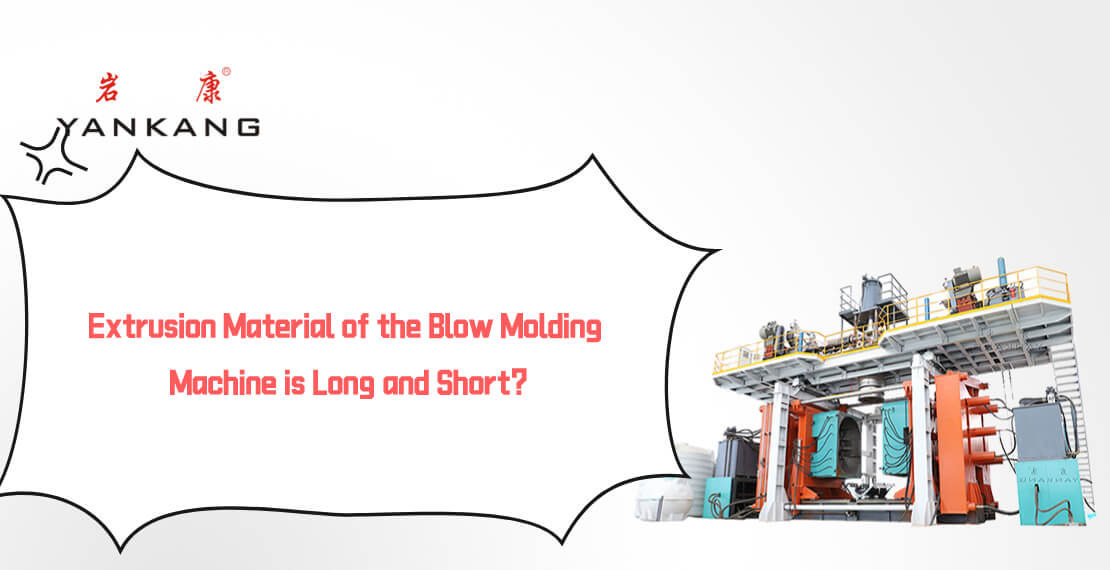The reason why the extrusion material of the blow molding machine is long and short is the main content of this post.
There are many reasons for the extrusion material of the blow molding machine to be longer and shorter.
The most important point is the control of the temperature. It can be divided into the following types: no-flow temperature, flow temperature, decomposition temperature, melting temperature, and glass transition temperature.
It is very important in the extrusion blow molding production process. When operating a hollow blow molding machine, attention must be paid to temperature control to ensure that suitable plastic products are manufactured.
No flow temperature. The highest temperature at which no flow occurs under a certain pressure. It is to add a certain amount of raw materials into the barrel at the upper end of the rheometer die, heat it to a certain temperature, after 10 seconds of constant temperature, apply constant pressure, if the raw material does not flow out of the die, it is difficult to increase the temperature of the material after the pressure is released After 10 degrees Celsius, hold for 10 seconds and then apply the same constant pressure, and continue to do so until the melt flows out of the die. Decrease this temperature by 10 degrees to be the non-flowing temperature of the material.
Flow temperature. It refers to the temperature at which the amorphous polymer changes from a highly elastic state to a viscous fluid state. It is the lower limit of the processing temperature of amorphous plastics.
Decomposition temperature. It means that when the temperature of the polymer in the viscous flow state is further increased, the degradation of the molecular chain will be intensified, and the temperature at which the polymer molecular chain is significantly degraded is the decomposition temperature.
Melting temperature. For crystalline polymers, it refers to the temperature at which the three-dimensional remote ordered state of the macromolecular chain structure transforms into a disordered viscous fluid state, also known as the melting point. It is the lower limit of the crystalline polymer molding processing temperature.
Glass transition temperature. Refers to an amorphous polymer, including the non-crystalline part of a crystalline polymer. The transition temperature from the glass state to the high elastic state or from the latter to the former is the lowest temperature at which the macromolecular segments of the amorphous polymer can move freely, and also the upper limit of the working temperature of the product.
The second point is electromagnetic interference. The hollow blow molding machine adopts a servo-electric drive system, which reduces the waste of electric energy caused by the oil pump or compressor that needs to be normally open when the hydraulic system or pneumatic system is running. Therefore, the servo-electric drive system saves more than 50% of energy than the hydraulic system and the pneumatic system; Servo electric drive also avoids the frequent oil leakage of traditional hydraulic drive that causes the machine and products to be contaminated, and can meet the cleanliness requirements of the food, medicine, health, and other industries; the embryo-carrying mechanism is equipped with advanced servo-electric drive The system uses a servo motor to drive the embryo-carrying slider with linear guide rails to run, stable operation, precise stepping and positioning, energy-saving, and energy saving. The drive system of the hollow blow molding machine is very important. Because the electronic ruler and servo valve are both unstable when they receive external magnetic interference, the general source of electromagnetic interference is the inverter.
The third point is that the screw feeding is unstable.
In the extrusion blow molding production process, the uniformity of the screw discharge is a key indicator, and its uniformity can be controlled by the stability of the extrusion and traction speed, and the uniform discharge generally depends on the precision manufacturing of the die. As the production process parameters change, in order to improve the uniformity of the discharge, an automatic horizontal control system must be introduced. The common control methods include automatic die head and automatic air ring controlled by thermal expansion screws.
Another point is that the damage or contamination of the electronic ruler can also cause the extrusion material of the blow molding machine to be longer and shorter.

